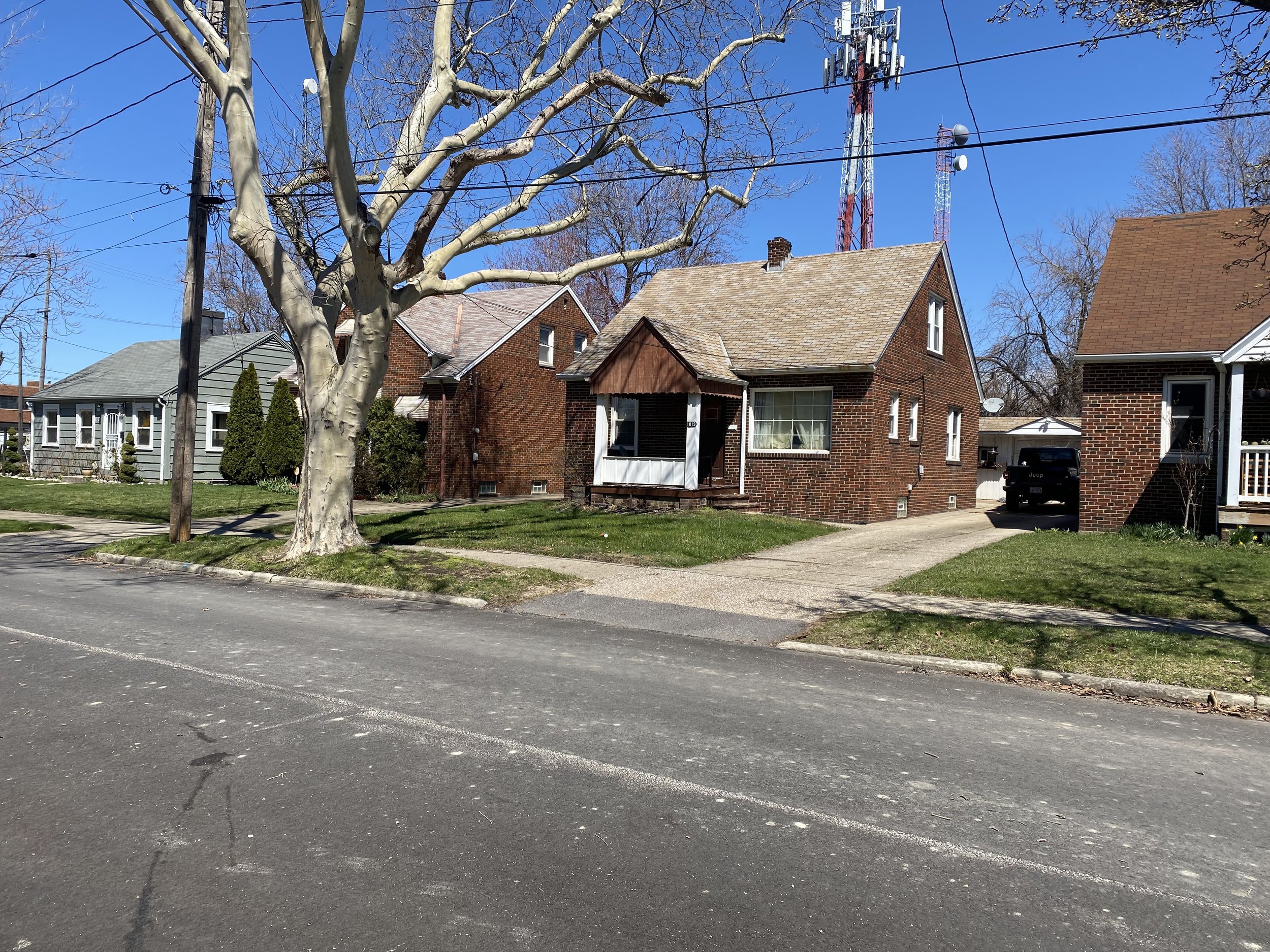Ever wonder where so many historical events happened around town? Or how Cleveland history helped shape the country’s larger history? This academic year, Teaching Cleveland is on a quest to uncover some hidden history gems for you – places where events took place that helped influence this unique community and beyond. And hey – if you didn’t know about any of these, don’t kick yourself! These are places that have little to no historical information telling anyone anything about it.
It happened here: An East Side explosion rips apart a community
What? A site where a natural gas explosion devastated the St. Clair-Superior neighborhood
Where? The northern end of E. 61st and Grdina Avenue, north of St. Clair
In October 1944, Cleveland was literally and figuratively booming. Amid a locally surging economy because of the ongoing war, one of the most devastating urban accidents in history occurred on Oct. 20 in what is known today as the St. Clair-Superior neighborhood.
At 2:30 pm on Friday, Oct. 20, a storage tank began to emit a stream of liquified gas that, pushed by Lake Erie winds, expanded into a thick white vapor and spread throughout the area, making it into the nearby sewers through the catch basins of street gutters. Mixing with air and sewer gas, sewer lines underground exploded at 2:40 pm, causing ripples of explosions that took out the tank from which the original leak occurred. The epicenter of the blast – estimated later to be the equivalent of ⅙ of the atomic bomb that wiped out Hiroshima – was at the northern end of E. 61st Street. Manhole covers shot into the air as jets of fire erupted in the underground sewers. To give a sense of the intensity, a manhole cover was found a couple miles east in Glenville and people in Chagrin Falls reported seeing a fireball reach high into the air.
Soon after the initial blast, many thought that the Cleveland fire department had the situation under control and returned to their homes, thinking they were safe. At 3 pm – about 20 minutes after the first explosion, a second above-ground tank exploded, leveling the area where the tanks sat and setting off another six explosions throughout the area. People who had returned home after the initial blast soon found their homes engulfed in flames from fire that traveled through the sewers and up into their home drains. It took the Cleveland fire department until 7 pm that night to contain the fires, but by that time the devastation was largely complete.
The scene was gruesome – with some people being vaporized instantly by the blasts. The official death toll from the disaster stood at 130, of which 98 were East Ohio employees, and 225 were injured. What else did the explosions leave in its wake? According to the Encyclopedia of Cleveland History, the blast left at least 680 people homeless, destroyed 79 homes, 217 cars, and miles of underground infrastructure. Luckily the blasts happened when most children were far away in schools and many people were at work, or the human toll would have surely been more devastating. Because many people kept stocks, bonds, and cash at home (the Great Depression had just ended), much wealth went up in flames as well. All told, among the businesses, factories, homes, and personal wealth – experts estimate that between $7-15 million was lost.
The event impacted natural gas companies around the U.S., too. Even though the East Ohio facility had been brand new in 1940 and had some of the most updated safety measures, companies realized their storage systems, many of which had been above-ground and in areas where many people lived nearby, needed to change.
The victims of the explosions are memorialized in Highland Park Cemetery, where the unidentified bodies were buried. Today, the area where the above-ground tanks once stood is still owned in part by East Ohio, and the two streets that dead-end to the area – East 61st and East 62nd – are adjacent to Grdina Park, the center of much of the devastation. Those two streets are nicknamed “Little Parma,” as the homes were all built in the late 1940s in the same bungalow style as so many other suburban homes constructed at that time – architecturally almost out of place in the older urban neighborhood that surrounds it.
For more information, check out Cleveland Historical.

